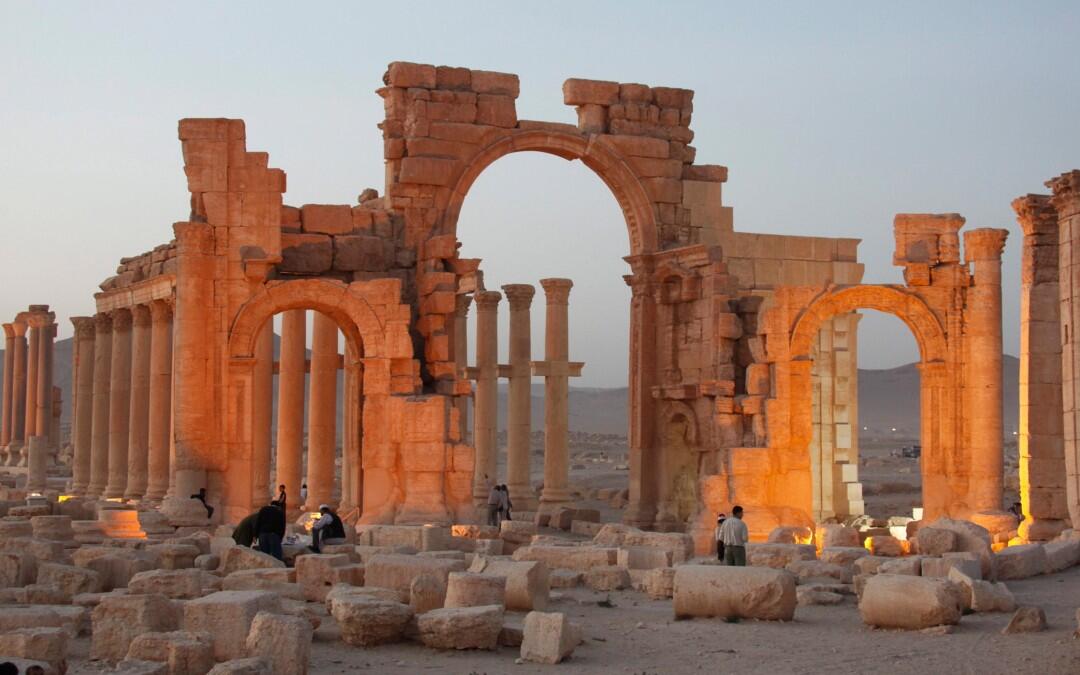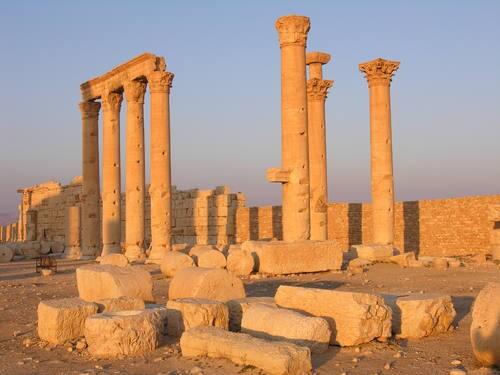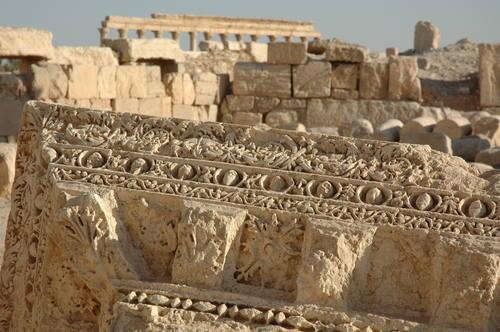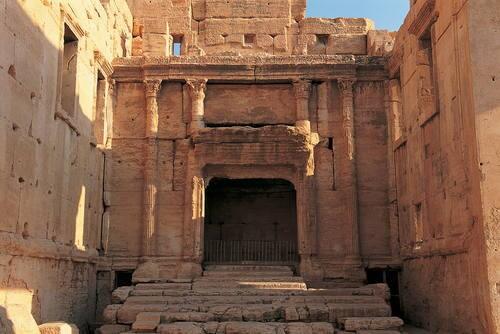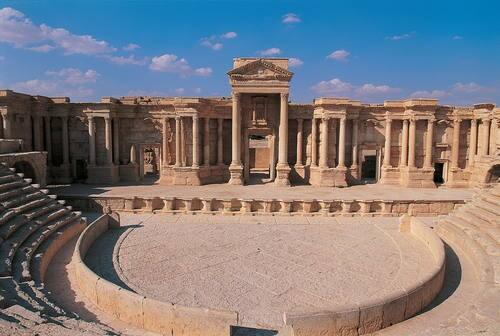The historic city Palmyra, was recaptured completely from ISIS, whose fighters had destroyed many monuments at the UNESCO world heritage site since they overran it in May last year. Russian President Vladimir Putin and UNESCO head Irina Bokova expressed hope on Sunday that efforts by the international community would help restore the Syrian historic city of Palmyra partly ruined and looted by ISIS terrorists, the Kremlin said. What happened to the ruins of Palmyra? To what extent were they affected?
Francesco Bandarin.(UNESCO)
The SANA news agency reported that the experts have preliminary examined the surviving antiquities of the ancient city, which was in the hands of IS militants since May 21, 2015.
More than 80% of Antiquities Preserved
Director of the directorate’s architectural center Nazir Awad told the news agency that “more than 80% of the antiquities in the territory of the museum preserve have survived and are in a satisfactory condition.” However, according to him, “the reconstruction of the destroyed and damaged monuments will take about five years if the timely financial support is provided.”
“The Syrian government hopes that UNESCO will join this work as a partner and provide all the necessary assistance,” the expert said. “The threat to the ancient buildings persists as the militants dug their hideouts beneath them. We still have to assess the degree of danger of these underground works to the surviving monuments,” Awad said.
The Gem of The Syrian Desert
Vandals from the Islamic State of terrorist group that controlled the city have plundered the local lore museum that kept the relics found during excavations. According to the Syrian television channel Al Ekhbariya, the museum halls are devastated, the statues of the patricians and the pagan gods are broken, as well as the precious mosaic panels that are now on the floor in a pile of debris and collapsed plaster. There is no statue of the Lion of Al-lat (1st century AD) at the entrance to the museum. It was destroyed by the IS vandals immediately after they seized Palmyra. In addition to the famous Arch of Triumph – the city’s architectural landmark, the terrorists also destroyed the Temple of Baalshamin (2nd century BC), the Sanctuary of the Semitic god Bel and the Palmyra necropolis – tower tombs of the patricians.
Ron Van Oers. (UNESCO)
Ron Van Oers. (UNESCO)
Palmyra, an ancient city in Syria’s Homs province some 210 kilometers from Damascus, was seized by gunmen of the Islamic State (a terrorist organization outlawed in Russia) in early summer 2015. The Syrian authorities said back then that Palmyra with its monumental ruins of a great city that was one of the most important cultural centers of the ancient world standing at the crossroads of several civilizations, could share the fate of Iraq’s ancient cities of Assur, Nimrud and Hatra that were destroyed by Islamic State militants.
Outstanding Universal Value
UNESCO describes Palmyra as an oasis in the Syrian desert, north-east of Damascus, saying that it contains the monumental ruins of a great city that was one of the most important cultural centres of the ancient world. From the 1st to the 2nd century, the art and architecture of Palmyra, standing at the crossroads of several civilizations, married Graeco-Roman techniques with local traditions and Persian influences.
First mentioned in the archives of Mari in the 2nd millennium BC, Palmyra was an established caravan oasis when it came under Roman control in the mid-first century AD as part of the Roman province of Syria. It grew steadily in importance as a city on the trade route linking Persia, India and China with the Roman Empire, marking the crossroads of several civilisations in the ancient world. A grand, colonnaded street of 1100 metres’ length forms the monumental axis of the city, which together with secondary colonnaded cross streets links the major public monuments including the Temple of Ba’al, Diocletian’s Camp, the Agora, Theatre, other temples and urban quarters. Architectural ornament including unique examples of funerary sculpture unites the forms of Greco-roman art with indigenous elements and Persian influences in a strongly original style. Outside the city’s walls are remains of a Roman aqueduct and immense necropolises.
Jean-Jacques Gelbart.
Discovery of the ruined city by travellers in the 17th and 18th centuries resulted in its subsequent influence on architectural styles.
Criterion (i): The splendour of the ruins of Palmyra, rising out of the Syrian desert north-east of Damascus is testament to the unique aesthetic achievement of a wealthy caravan oasis intermittently under the rule of Rome from the Ier to the 3rd century AD. The grand colonnade constitutes a characteristic example of a type of structure which represents a major artistic development.
Criterion (ii): Recognition of the splendour of the ruins of Palmyra by travellers in the 17th and 18th centuries contributed greatly to the subsequent revival of classical architectural styles and urban design in the West.
Criterion (iv): The grand monumental colonnaded street, open in the centre with covered side passages, and subsidiary cross streets of similar design together with the major public buildings, form an outstanding illustration of architecture and urban layout at the peak of Rome’s expansion in and engagement with the East. The great temple of Ba’al is considered one of the most important religious buildings of the 1st century AD in the East and of unique design. The carved sculptural treatment of the monumental archway through which the city is approached from the great temple is an outstanding example of Palmyrene art. The large scale funerary monuments outside the city walls in the area known as the Valley of the Tombs display distinctive decoration and construction methods.
Jean-Jacques Gelbart.
Integrity (2009)
All the key attributes, including the main colonnaded street, major public buildings and funerary monuments, lie within the boundary. The tower tombs and the citadel are vulnerable to minor earthquakes and lack of conservation. Since the time of inscription, the population of the adjacent town has increased and is encroaching on the archaeological zone. Although traffic has increased, the main road that passed through the site has been diverted. Increased tourism has brought pressure for facilities within the property.
Authenticity (2009)
The key attributes display well their grandeur and splendour. However the setting is vulnerable to the encroachment of the adjacent town that could impact adversely on the way the ruins are perceived as an oasis closely related to their desert surroundings.
Silvan Rehfeld.
Protection and management requirements (2009)
The site was designated a national monument and is now protected by the National Antiquities law 222 as amended in 1999. A buffer zone was established in 2007 but has not yet been submitted to the World Heritage Committee.
The regional strategic action plan currently under preparation is expected to provide guidelines to expand and redefine the site as a cultural landscape, with respect to the transitional zones around the archaeological site, the oasis and the city.
There is an on-going need for a conservation and restoration plan to be developed that addresses fully the complex issues associated with this extensive multiple site and will allow for coordinated management, clear priorities and a cultural tourism strategy and address the issues of expansion of the nearby town.

